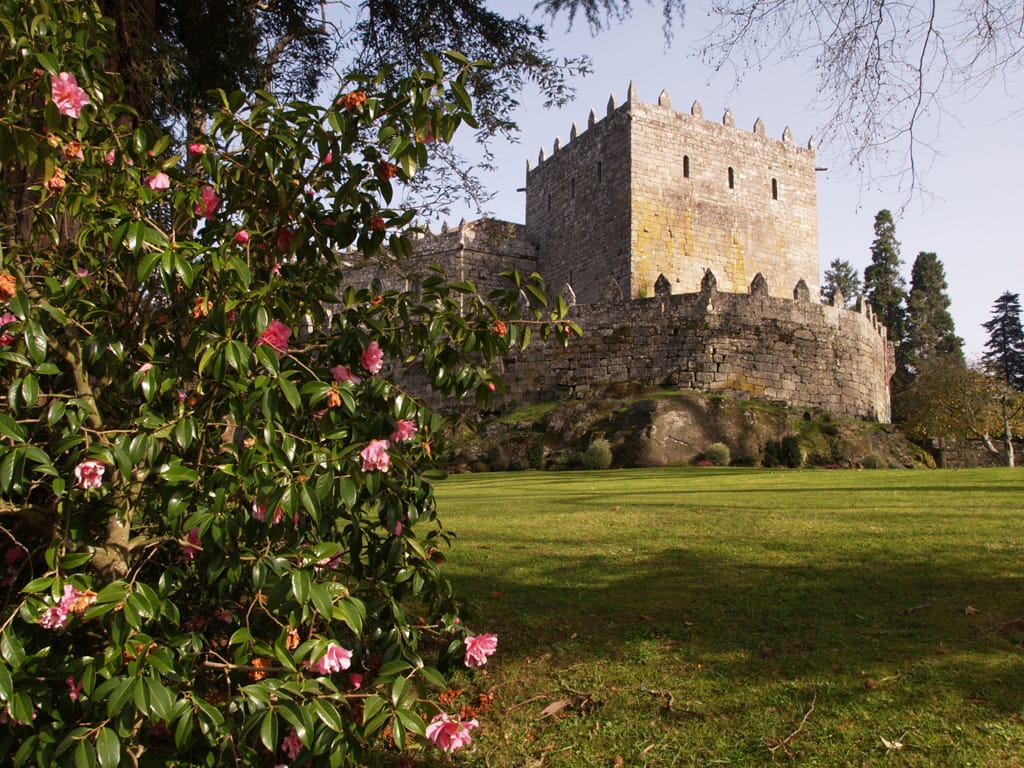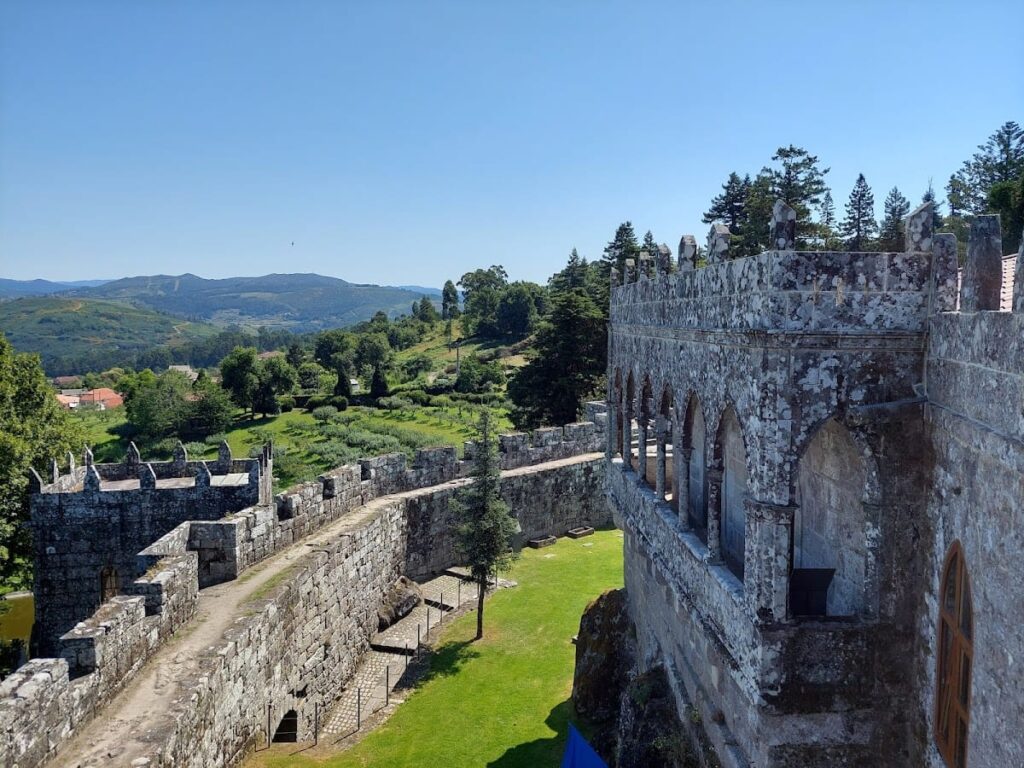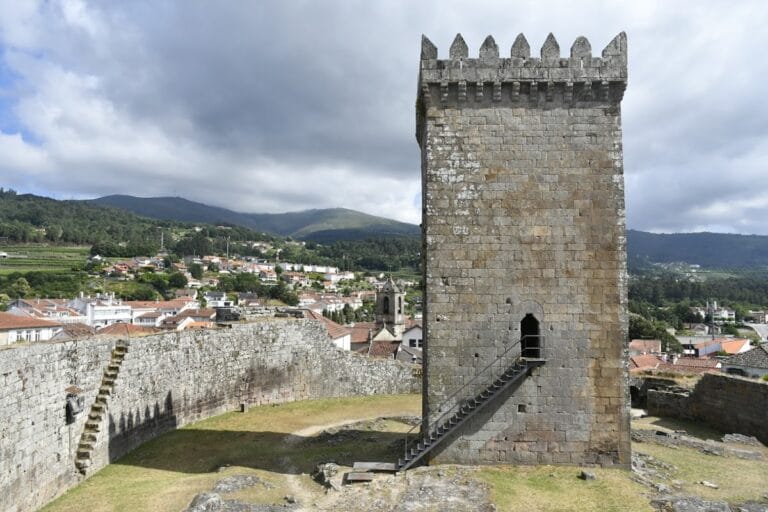Castle of Soutomaior: A Historic Fortress in Pontevedra, Spain
Visitor Information
Google Rating: 4.7
Popularity: Medium
Google Maps: View on Google Maps
Official Website: www.castelodesoutomaior.com
Country: Spain
Civilization: Medieval European
Remains: Military
History
The Castle of Soutomaior stands on Monte Viso in Pontevedra, Spain, overlooking the meeting point of the Oitavén and Verdugo rivers. It was founded in the 12th century by Paio Méndez Sorrede during the reign of Alfonso VII of Galicia. The fortress became the seat of the Soutomaior family, a powerful noble lineage in medieval Galicia, serving as their political and military center.
Throughout the Middle Ages, the castle played a significant role in regional conflicts. It was involved in the civil war between Pedro I and Enrique II of Castile and in border disputes with Portugal. The fortress also witnessed the Irmandiña revolts between 1467 and 1469, a popular uprising against noble power. During this period, the castle suffered partial destruction but was later rebuilt with stronger defenses, including a double wall system.
In the 15th century, Pedro Álvarez de Soutomaior, known as Pedro Madruga, expanded and modernized the castle. He added features to accommodate firearms, such as gunports and bronze cannons. From this stronghold, Pedro Madruga exercised control over much of Galicia. The castle also held notable prisoners, including Diego de Muros, bishop of Tuy.
The 16th century brought changes under the Catholic Monarchs, who ordered the reduction of the castle’s tower height as punishment to Pedro Madruga. Despite this, the fortress remained strategically important along the Portuguese border. By the late 18th century, after long succession disputes ended in 1795, the castle had fallen into decline, with damaged structures and deteriorated roofing.
Between 1869 and 1870, Antonio Aguilar y Correa, Marquis of la Vega de Armijo and Mos, restored the castle. He transformed it into a neogothic summer residence, adding comfortable living spaces and French-inspired gardens. The castle became a cultural and political meeting place, attracting visitors such as King Alfonso XII.
In 1908, María Vinyals, a feminist writer and social activist known as the “Red Marchioness,” inherited the castle. She used it as a summer home and cultural venue. Alongside her husband Enrique Lluria, she established a sanatorium and other enterprises on the grounds. Their political activism led to the loss of the property in a public auction in 1917.
The castle changed ownership several times until the Provincial Council of Pontevedra acquired it in 1982. Restoration work was completed by 1987. Archaeological excavations took place in 2010. Since May 2018, the castle operates as a museum showcasing its history and the legacies of the Soutomaior family, Pedro Madruga, and María Vinyals. It also hosts the Escola da Igualdade María Vinyals, a school promoting equality, since 2016.
Remains
The Castle of Soutomaior occupies a 25-hectare site atop Monte Viso at 119 meters elevation. Its layout follows an irregular oval shape, enclosed by two defensive walls adapted to the terrain. The double-walled perimeter reflects medieval military architecture designed for layered defense.
The oldest and main structure is the rectangular keep, known as the Torre del Homenaje. It covers about 150 square meters and rises 15 meters high, with walls up to 3.5 meters thick. Originally, access was through a drawbridge leading to the first floor, a common defensive feature in medieval castles.
A second tower, the Torre del Conde, was built in the 15th century beside the outer wall to protect the original entrance. During the 19th-century restoration, this tower was repurposed as a library. The castle once had a moat crossed by a drawbridge dating from the 16th or 17th century, later replaced by a stone bridge bearing the coat of arms of the Marqueses de Mos.
The first defensive wall includes two gates. The southern gate, currently in use, displays the Marqueses de Mos coat of arms. The northern gate, the original main entrance, bears the arms of the Soutomaior and Zúñiga families. After the Irmandiña revolt, a second wall was added to strengthen defenses. This wall features gunports, now sealed, and communication passages between the walls.
Restorations in the late 19th century introduced neogothic elements such as parapets, battlements, stone corbels, and gargoyles. The palace adjoining the keep and extending north to the second tower was rebuilt in a historicist neogothic style. It includes ovoid arches, galleries opening onto the courtyard, new staircases, a chapel with carved walnut doors, wood-beamed ceilings, and fireplaces.
A notable feature is the “Galería de las Damas,” a neogothic gallery with pointed arches and stone columns replacing an earlier wooden structure. This gallery opens onto the courtyard. The palace chapel once held an altar painting by Casto Plasencia, a copy of a work by Murillo.
Surrounding the castle are extensive gardens covering about 15,700 square meters. They contain roughly 175 tree species, including cedars of Lebanon, eucalyptus, firs, pines, chestnuts, magnolias, and sequoias, some over 800 years old. The gardens are especially known for their camellia collection, with more than 300 specimens of 22 varieties. This collection earned the “Jardín de Excelencia Internacional” award in 2012 from the International Camellia Society, the only garden in Spain with this distinction.
The gardens also feature the “Fuente de la Marquesa” fountain, the “Estanque da Ría” pond shaped like the Vigo estuary, a pavilion for unmarried guests, a gazebo, and a small theater. Within the garden area stands the former Hotel Sanatorio de Lluria, established in 1913 for therapeutic treatments. It now operates as the three-star Posada del Castillo de Soutomaior.
Despite numerous restorations and changes, the castle retains its medieval character and remains well preserved as a cultural and museum site.










